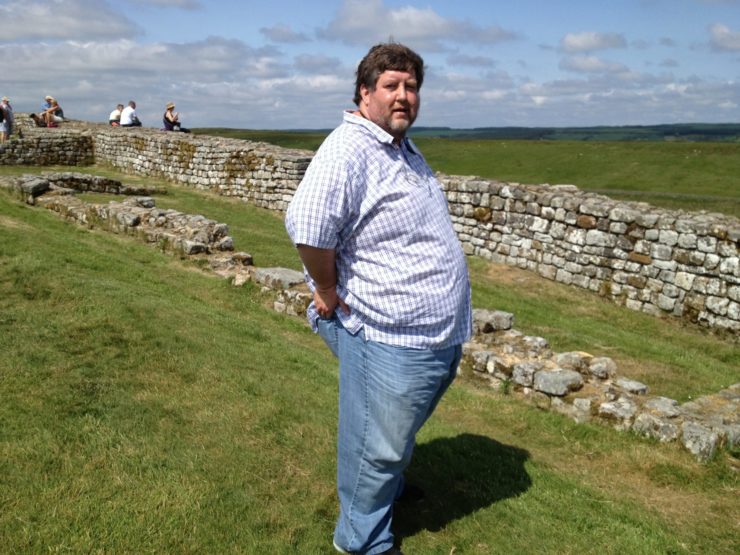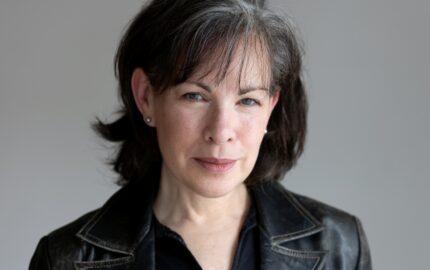The first time I met Tommy Tomlinson, he and his wife, Alix Felsing, took me to their favorite spot for breakfast in Charlotte, North Carolina, where they lived and where Tommy wrote a wildly popular column for the Charlotte Observer. If memory serves – and this is important for what follows – the meal was delicious, filling, and loaded with carbs and fat. Tommy was, and remains, a warm, funny and compassionate man devoted to the craft of reporting and writing. He also was a big man. In fact, I thought, a very, very fat man, although I certainly didn’t mention it at the time.
What I didn’t know was that the southern cooking we ate that day was, for Tomlinson, baked into a lifelong, intractable addiction to food, and to a hunger that gripped him as a child and never let go as he grew larger and larger. At the dawn of 2015, he weighed 460 pounds.
After his beloved older sister Brenda died – killed, he was convinced, by her obesity – and after writing a powerful and personal story about a morbidly obese athlete, Tomlinson decided the time had come to kick his own habit after many failed attempts. He has now chronicled his life's battle in “The Elephant in the Room: One Fat Man’s Quest to Get Smaller in a Growing America.” (Due out Jan. 15, 2019, by Simon & Shuster.)
Tomlinson’s book is a brutally honest memoir that tracks his addiction from earliest memories through college and a successful newspaper and magazine career. He juxtaposes his personal story with the societal crisis of obesity, drawing on the memoirist’s exploration of intimate moments with the journalist’s probe of public implications. But this is no lecture on obesity: Tomlinson's book is a clear-eyed look at himself in the mirror.
In the arc of his career – newspaper reporter and columnist, magazine writer, podcast host, writing teacher, blogger – Tomlinson learned to devise simple but effective ways to structure a range of narratives. "The Elephant In The Room" is no exception, but this time at booklength.
After reading an advance copy, I wanted to know why someone who feels the stigma of obesity every day would expose himself so nakedly, to the extent that he describes how it affects his sex life. How did he weigh the honesty needed to tell a true story with the need to protect those who are part of that story? And perhaps most important when considering memoir – or any intense reconstruction that relies on the quirks of memory – how did he report the past with any assurance of its accuracy?
I reached out to Tomlinson via email. We talked about all the above and about the kind of things writers tend to talk about: What prompted the book? How many drafts did he write? How did he tackle structure? How long did it take?
(The conversation has been lightly edited for length and clarity.)
STORYBOARD: Why did you decide to write a book about your life as a fat man in America?
TOMMY TOMLINSON: It’s a story I had been circling all my life, but I was always afraid to tell it. I was worried about what it would do to me to have to dig that deep. But in 2014, I did a story for ESPN the Magazine on Jared Lorenzen – a famously overweight quarterback who had ended up playing minor-league football at more than 400 pounds. As I talked to Jared, and figured out how to tell his story, it helped me see the path for how to tell mine. I wrote a proposal for the book as I was finishing up the story on Jared. The proposal sold in two weeks.
Everybody knows we’re getting bigger. The more important questions are why, and what we should do about it.
~ Tommy Tomlinson
Of her memoir, “Hunger,” Roxane Gay said: “When I was writing it I was worried about exposing myself like this, and being this honest.” Did you feel the same way?
There are things in this book that I had never told anyone – my wife, my closest friends, anyone – before I put them on the page. But I decided early on that if I was going to do this book, I had to do it right. Other overweight people – or people with any other addiction, really – would be able to sniff it out if I faked it. Even more, I’d always know. So I kept pushing myself to be more honest, to tell the truth the best I could.
Your prologue starts with a very brief memory. Then the book launches, on New Year’s Eve 2014, with the bluntest of statements: “I weigh 460 pounds.” From there you spool out what that means in every part of your life in pretty graphic detail. How do you decide how far to go? And how do you walk the line between exposing and protecting yourself and others, like your wife and mother?
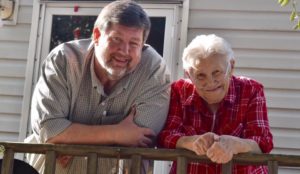
I held to the same standard I’d hold any story I do: What are the details that tell the most? What’s necessary to tell the whole story? I don’t tell EVERY detail about my life, but I did my best to leave in everything that I thought mattered to the story I’m trying to tell.
I told my family I was doing the book and that they might be part of it. I also showed them the manuscript ahead of time – not something I’d normally do, but I think the rules are a little different in memoir. They all felt it was fair and true. My mom died in January (2018), but she got to see an early version. She thought it was good, except for all the curse words.
You write frankly about your sex life as a teenager and a married man and your inability to have a child with your wife. How do you balance the memoir’s demand for intimacy and honesty with respect for people you care about?
That was the hardest line for me to draw. Early on, when I read a section at a writers' retreat, somebody asked me: “Is there gonna be any sex in the book?” It’s not the kind of thing Alix and I talk about with other people. But I thought it was important to give a glimpse into our private lives (and it’s only a glimpse) because one, it’s something people naturally wonder about, and two, it speaks to some of the consequences of my weight. As far as my sex life before Alix, it’s intentionally vague – I didn’t want to drag anyone into this book who didn’t want to be there.
My mom died in January (2018), but she got to see an early version. She thought it was good, except for all the curse words.
~ Tommy Tomlinson
Let’s talk about the nitty gritty of writing a memoir? How long did it take? How many drafts? Did you solicit feedback? What role did your editor play?
From contract signing to having a version everybody was basically happy with took about three and a half years – but remember, I was working regular jobs that whole time. My editor at Simon & Schuster, Jofie Ferrari-Adler, told me he didn’t want to see my first draft. He wanted me to write it, show it to some friends, and then show him the second draft. The way he puts it is, it’s easier for him to take a book from a 9 to a 10 than from a 7 to a 9. So that’s what I did. I had four or five people I trust look at the first draft, then I basically did a rewrite. That’s the version I sent to Jofie, about two years in. He and my agent, Sloan Harris, had lots of smart feedback – they both urged me to go one layer deeper. That took another year or so. Then we went back and forth on smaller things before we got to a version that, as Jofie put it, would be good enough to publish in case I got hit by a truck. That’s not all, though – there was a long round of copyediting, then three passes of proofreading to make the last tiny fixes. I’m on the last pass now.
When I interviewed you in 2004, after you won the ASNE award for profile writing, you said anytime you have a long story, you need a way to break it up. For your book, how did you decide to use a one-year time frame and the scale (your weight) as a structural device? And how did you decide to weave the story of the fattening of America – which is essentially an extended nut graf – throughout the book rather than deal with it in one place?
The calendar is always a handy way to frame a story, and it especially made sense for this one because everyone who has tried to lose weight measures at least month by month. So that made for a natural 12 chapters. The book is not really about how much weight I lost – it’s more about learning about yourself as a way to get ready to lose weight – but of course I was trying to lose along the way, so I marked the end of each chapter with how I did that month. And along the way I wanted to zoom out from my story into how this is a more and more prevalent American story, so I circled back to that idea several times along the way.
How did you keep the larger context about the obesity epidemic from bogging down the personal narrative?
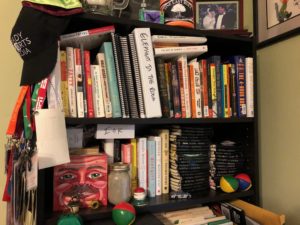
I did a lot of research for this book – I read 30 or 40 books on food and obesity, stacks of magazine articles, hundreds of stories. Almost none of the facts or stats from all that material made it into the book, although everything I read informed how I was writing. In the end, I felt like readers didn’t need to be convinced of my basic point. Everybody knows we’re getting bigger. The more important questions are why, and what we should do about it.
How do you report your own past? You vividly reconstruct scenes and remembered conversations from as far back as early childhood, your college and early newspaper years. How do you know these memories are accurate?
One role model for me was David Carr’s great memoir “The Night of the Gun,” where he went back and reported out his drug-fueled early life – there were a lot of things he didn’t remember. I remembered most of the things I wrote about in this book. But I did check out my memories with Alix, my family and friends. I wasn’t a reporter in quite the same way, because a memoir, at heart, is a really long essay. But I did check the facts.
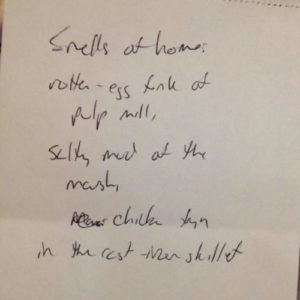
One thing I made sure not to do is quote stuff from decades ago as if it was verbatim. I’m always skeptical when people remember long conversations from 30 or 40 years ago with such accuracy they can put it in quote marks. I don’t believe I have anything like that in the book. I do have a few moments where I remember the gist of what somebody said, and I might put that in italics.
Having said all that, there are some scenes in the book where I had to rely on my memory. There’s a scene early on when I’m 3 or 4 years old, playing in our front yard, watching kids on the other side of the fence play kickball. I don’t know who any of those kids are. But it’s a really vivid memory for me – in fact, it’s the first memory I have. So I went with it, hoping the reader will know that what I wrote is the best I can remember.
Anyone who’s suffered addiction can see themselves in your pages. Were there any memoirs that prepared you to tell the story of your addiction to food?
There are a bunch. Roxane Gay’s “Hunger,” which you mentioned, came out as I was in the middle of my work. It’s so good that it forced me to work harder. Jennifer Weiner’s book “Hungry Heart” came out a few months before that and has some really strong sections on her relationship with food. A lesser-known book called “703,” by Nancy Makin, helped me figure out how to tell my story. Jeff Garlin, the comedian and actor from “Curb Your Enthusiasm,” has a book called “Curbed” that deals with his weight in an honest and straightforward way. I just finished a book that comes out this month (October 2018) called “Heavy,” by Kiese Laymon, a professor at Ole Miss. It was so powerful it just about broke me.
